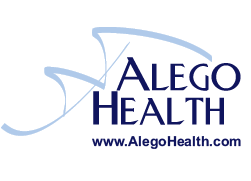11 Sep, 2015 | Rachael Watson | No Comments
Healthcare analytics the future of care?
Healthcare analytics is used in the marketing of business software and consulting services, making extensive use of data, statistical and qualitative analysis, explanatory and predictive modeling. Currently the most prevalent application for real-time health care analytics is within clinical decision support (CDS) software. These programs analyze clinical information at the point of care and support health providers as they make prescriptive decisions. These real-time systems are “active knowledge systems, which use two or more items of patient data to generate case-specific advice.”
Analytics is no small factor for healthcare organizations in the months ahead and will be a key issue for measurement. The global healthcare analytics market accounted for $5.5 billion in 2014 and is expected to grow at nearly 25 percent to reach $32.4 billion by 2022. Seemingly a bit off and likely some room for error here, but with the rise of analytics tools and because of how it helps healthcare organizations in reduction of patient’s stays and readmissions in hospitals, improved quality care, fraud identification and prevention of chronic diseases, the software and related solutions are likely going to be a big play in healthcare’s future.
The factors contributing to the market growth are many and include better efficiency of healthcare of organizations, federal healthcare mandates and increasing healthcare IT adoption. However, lack of skilled labor with analytical skills, patient data security and privacy issues are inhibiting the growth of the market.
On the payer side, realizing the benefits of such solutions, Humana, an early IT adopter, is reported to be making analytics the foundation of its clinical operations and consumer engagement efforts, reports Enterprise Apps Today.
The insurer’s predictive models have already helped it identify almost 2 million members at high risk of diseases and closed 4.3 million instances of gaps in care by identifying which members would benefit from regular communication with a provider. Predictive analytics, proving its worth, also has helped Humana lower hospital readmission rates by about 40 percent by using real-time analytics to determine which members were most likely to be readmitted.
According to the site, its more than 15,000 care managers and other professionals help coordinate care for its members, ensuring they make changes to lifestyle, diet and other areas. And all of those efforts are powered by analytics.
Although most insurers haven’t seen “analytics as a key component of doing business,” Humana has benefited from a mature technology infrastructure, a supportive CEO and an analytics team composed of professionals with different backgrounds. “These are deep problems, and we need the best multidisciplinary talent working on them,” a spokesperson told the site. “It’s not something just public health people can solve, or just computer science people can solve.”
Given the perceived power of analytics and data use in health, are you using it to help your patients or organization stand out? Are you seeing the benefit in the health data push? How do you plan to use such solutions to better the work you do?

Write Reviews
Leave a Comment
No Comments & Reviews